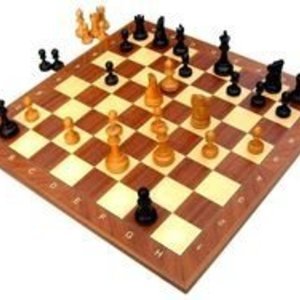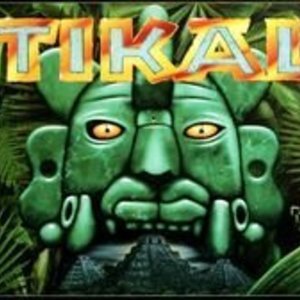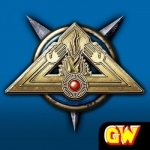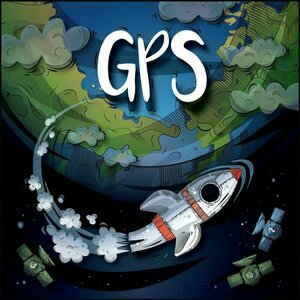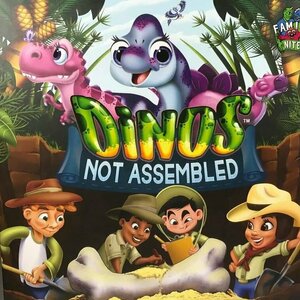Search
Search results
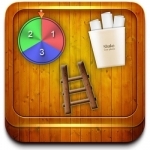
Lucky Games - Roulette, Ghost leg, Spin The Bottle, Sortilege
Entertainment and Games
App
When and where anyone can enjoy easy to random lucky game that aggregated. Board game type is...
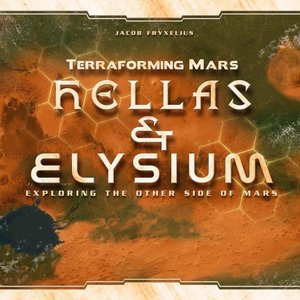
Terraforming Mars: Hellas & Elysium
Tabletop Game
Terraforming Mars: Hellas & Elysium, the first expansion for the 2016 smash-hit Terraforming Mars,...
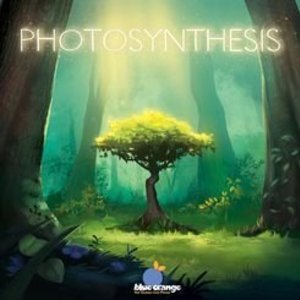
Photosynthesis
Tabletop Game
Welcome to the world of Photosynthesis, the green strategy board game! Plant and shape the...
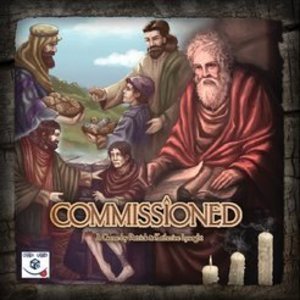
Commissioned
Tabletop Game
Commissioned is a 2-6 player cooperative-style board game with a simple deck-building mechanism...
Christianity Euro Religious
Purple Phoenix Games (2266 KP) rated GPS in Tabletop Games
Mar 23, 2021
One thing that I’m always on the hunt for is a good quality filler game. Something that is fun, light, fast, and entertaining for when you need a break between bigger games. So when I saw this Kickstarter for 3 small 10-minute games, I knew I was in luck! This review is for one of those games, GPS. Did it hold up to my expectations? Keep reading to find out!
GPS is a racing game in which players are launching satellites into orbit, and attempting to be the first to organize their satellite chain in numerical order. To setup the game, assemble the planet pieces and spinner, and give each player their 12 numbered satellites. Players shuffle their satellites face-down, and then flip 3 of them face-up. The game is now ready to begin!
Each turn, a player will spin the spinner. Once the spinner has stopped, every player will place one of their 3 face-up satellites in the pointed space. Players then each reveal a new face-down satellite, and turns continue in this fashion. After 12 turns, all players will have all of their satellites in play around the board. Now, instead of placing a new satellite when the spinner stops, players will move an already placed satellite to the pointed space. If the spinner ever stops on a space where you already have a satellite, you just move one of your satellites to the nearest space in either direction that doesn’t already have one of your satellites. The goal of the game is to arrange your satellites in ascending numerical order, starting from the start line on the board. At the start of a turn, if a player has completed that goal, then they win!
Seems simple enough, right? That’s the point! GPS is supposed to be a game that is easy to teach and fast to play. There is a small amount of strategy involved in decided which satellites to place where, to help set yourself up to be the fastest to organize them numerically. More often than not, though, the ‘right’ move is the obvious one to take, so don’t be expecting a brain burner with this one. All in all, simple gameplay and mechanics that are easy for pretty much any age to grasp.
The biggest issues I have with GPS actually are the components. Don’t get me wrong – the quality of the components is great! It’s just how they affect the gameplay that is disappointing. For starters, the satellites for each player are nice and sturdy cardboard. But the size of the spaces around the game board are a little smaller than the satellites, making it difficult to fit them properly and clearly in a specific space. The next issue is with the spinner/game board itself. The spinner has a small rubber bottom to help avoid unwanted movement, but unfortunately it does little to stop that problem. Almost every time the spinner is spun, the game board moves on the table. The movement of the board knocks any satellites that are in play out of alignment. With the oversized satellites and the small board spaces, it’s sometimes hard to tell in which space a satellite was originally placed. These issues just take a fast, light-hearted game and turn it into a frustrating filler for me.
Overall, I would say that GPS is a good game in theory, but it was just not necessarily executed well. Perhaps if the components were more conducive to the gameplay, I would have different thoughts, but those problems just leave a sour taste that makes me want to skip over it when looking for a filler. This is a game I might pull out for younger gamers, but not one that I see getting a lot of table time with my regular group. Purple Phoenix Games gives this one a sputtering 6 / 12.
GPS is a racing game in which players are launching satellites into orbit, and attempting to be the first to organize their satellite chain in numerical order. To setup the game, assemble the planet pieces and spinner, and give each player their 12 numbered satellites. Players shuffle their satellites face-down, and then flip 3 of them face-up. The game is now ready to begin!
Each turn, a player will spin the spinner. Once the spinner has stopped, every player will place one of their 3 face-up satellites in the pointed space. Players then each reveal a new face-down satellite, and turns continue in this fashion. After 12 turns, all players will have all of their satellites in play around the board. Now, instead of placing a new satellite when the spinner stops, players will move an already placed satellite to the pointed space. If the spinner ever stops on a space where you already have a satellite, you just move one of your satellites to the nearest space in either direction that doesn’t already have one of your satellites. The goal of the game is to arrange your satellites in ascending numerical order, starting from the start line on the board. At the start of a turn, if a player has completed that goal, then they win!
Seems simple enough, right? That’s the point! GPS is supposed to be a game that is easy to teach and fast to play. There is a small amount of strategy involved in decided which satellites to place where, to help set yourself up to be the fastest to organize them numerically. More often than not, though, the ‘right’ move is the obvious one to take, so don’t be expecting a brain burner with this one. All in all, simple gameplay and mechanics that are easy for pretty much any age to grasp.
The biggest issues I have with GPS actually are the components. Don’t get me wrong – the quality of the components is great! It’s just how they affect the gameplay that is disappointing. For starters, the satellites for each player are nice and sturdy cardboard. But the size of the spaces around the game board are a little smaller than the satellites, making it difficult to fit them properly and clearly in a specific space. The next issue is with the spinner/game board itself. The spinner has a small rubber bottom to help avoid unwanted movement, but unfortunately it does little to stop that problem. Almost every time the spinner is spun, the game board moves on the table. The movement of the board knocks any satellites that are in play out of alignment. With the oversized satellites and the small board spaces, it’s sometimes hard to tell in which space a satellite was originally placed. These issues just take a fast, light-hearted game and turn it into a frustrating filler for me.
Overall, I would say that GPS is a good game in theory, but it was just not necessarily executed well. Perhaps if the components were more conducive to the gameplay, I would have different thoughts, but those problems just leave a sour taste that makes me want to skip over it when looking for a filler. This is a game I might pull out for younger gamers, but not one that I see getting a lot of table time with my regular group. Purple Phoenix Games gives this one a sputtering 6 / 12.
Purple Phoenix Games (2266 KP) rated Dinos Not Assembled in Tabletop Games
Mar 15, 2021
I think it’s no secret that I would be super hyped to go on a dinosaur dig. My brother, Bryan, is certainly more of a dino dude than I am, but I still remember loving them as a child and wishing I could see a skeleton being unearthed. Now I am the one with children who wish the same thing, and now I can play games with just that theme and they enjoy themselves. This is just such a game.
Dinos Not Assembled is a competitive set collection board game with hints of take-that for two to four players that can be enjoyed by players as young as four years old (I know this because my son is four and he loves it). In it players are acting as assistant paleontologists vying for the prestigious opportunity to join a world-famous paleo on their next dig. The player who is first to display three complete dinosaur skeletons in their portion of the museum will win the chance to go on the dig and win the game.
DISCLAIMER: We were provided a copy of this game for the purposes of this review. This is a retail copy of the game, so what you see in these photos is exactly what would be received in your box. I do not intend to cover every single rule included in the rulebook, but will describe the overall game flow and major rule set so that our readers may get a sense of how the game plays. For more in depth rules, you may purchase a copy online or from your FLGS. -T
To setup place the main Museum Board and Dig Site Board in the middle of the table. The Dino Cards are shuffled and each player receives two cards. In addition each player will choose their Character Boards and section of the museum. All Bone Tiles are shuffled into the Dirt Sack, four of these tiles are drawn and displayed on the Dig Site Board, and the Dino Meeples are placed on the table nearby. The first player receives the velociraptor talon (in my copy) and the game may begin!
On a turn a player may perform one action from a choice of five actions: Dig, Steal, Clear, Make, Plan. Since the players are attempting to build their dinosaur skeletons based on the necessary tile types from their Dino Cards, players may Dig by selecting two Bone Tiles from the Dig Site Board to add to their Character Board. Players may never have more than four tiles at any one time. Perhaps the Dig Site Board offers nothing of interest to the active player. The active player may choose to instead Steal one Bone Tile from another player onto their own Character Board. When this happens the player that was just stolen from alerts the Security Meeple and they take the meeple to their Character Board to signify they may not be stolen from again until another player has suffered a Steal action. The active player may choose to instead Clear the board by removing the tiles on offer and drawing four new tiles to the board.
Once a player has collected the necessary Bone Tiles to build a dino skeleton they may Make the skeleton. This requires the player to discard their Bone Tiles back to the Dirt Sack (which I mistakenly kept calling the Dirt Bag), place their completed Dino Card on their Character Board, and place the appropriate Dino Meeple on one of their museum spaces. This player is now one dino closer to winning the game.
If none of these options suit the active player they may always Plan a new dig by drawing a Dino Card from the pile on the Dig Site Board and adding it to their hand. Players may not hold more than three Dino Cards at any one time.
Play continues in this manner of players choosing one action to perform on their turn until one player has made their third dino skeleton. That player wins the game and then gloats to their father. I mean, that didn’t happen…
Components. This game is fabulously produced. The artwork is just perfect for this game. It is colorful, cartoony without being too wacky, and lovable all around. The components themselves are also very good quality. My favorite pieces are all the Dino Meeples and the fancy Security Meeple. Securiteeple?
For a game that states it is intended for players aged eight and above this is a great family game. Yes, my four year old plays it and loves it, and absolutely zero reading skills are necessary to play. The Dino Cards have some fun facts on them, but are not required to enjoy the game. Once players truly understand the five actions that can be taken (and it may take several turns to click) the game is a breeze and flows really well. I would caution gamers playing with younger kids that the Steal action may cause some tears, but it can be used as an essential teaching moment.
Even with strictly adults this game is excellent. Very light and gateway, but still very enjoyable. There is just something about collecting dinosaur bones and building your beasts, but having to also struggle with deciding which bones to keep and which to pass on, as your board can only hold four tiles at a time, but each dinosaur requires three bones to complete. It can be a tasty balancing act of resource collection that I truly love.
This all said Purple Phoenix Games gives this one a very enthusiastic 11 / 12, with a guest score from my son. If your collection lacks a great family game for younger gamers or you are completely invested in the dinosaur theme then this one is a no-brainer. If you enjoy family games with a little bit of take-that, then this is a little gem for you to consider. I am so glad to have this in my collection and my son is already asking to be its caretaker. He has only ever requested two games to ever become “his,” and this is one of them. High praise from the son of a game reviewer.
Dinos Not Assembled is a competitive set collection board game with hints of take-that for two to four players that can be enjoyed by players as young as four years old (I know this because my son is four and he loves it). In it players are acting as assistant paleontologists vying for the prestigious opportunity to join a world-famous paleo on their next dig. The player who is first to display three complete dinosaur skeletons in their portion of the museum will win the chance to go on the dig and win the game.
DISCLAIMER: We were provided a copy of this game for the purposes of this review. This is a retail copy of the game, so what you see in these photos is exactly what would be received in your box. I do not intend to cover every single rule included in the rulebook, but will describe the overall game flow and major rule set so that our readers may get a sense of how the game plays. For more in depth rules, you may purchase a copy online or from your FLGS. -T
To setup place the main Museum Board and Dig Site Board in the middle of the table. The Dino Cards are shuffled and each player receives two cards. In addition each player will choose their Character Boards and section of the museum. All Bone Tiles are shuffled into the Dirt Sack, four of these tiles are drawn and displayed on the Dig Site Board, and the Dino Meeples are placed on the table nearby. The first player receives the velociraptor talon (in my copy) and the game may begin!
On a turn a player may perform one action from a choice of five actions: Dig, Steal, Clear, Make, Plan. Since the players are attempting to build their dinosaur skeletons based on the necessary tile types from their Dino Cards, players may Dig by selecting two Bone Tiles from the Dig Site Board to add to their Character Board. Players may never have more than four tiles at any one time. Perhaps the Dig Site Board offers nothing of interest to the active player. The active player may choose to instead Steal one Bone Tile from another player onto their own Character Board. When this happens the player that was just stolen from alerts the Security Meeple and they take the meeple to their Character Board to signify they may not be stolen from again until another player has suffered a Steal action. The active player may choose to instead Clear the board by removing the tiles on offer and drawing four new tiles to the board.
Once a player has collected the necessary Bone Tiles to build a dino skeleton they may Make the skeleton. This requires the player to discard their Bone Tiles back to the Dirt Sack (which I mistakenly kept calling the Dirt Bag), place their completed Dino Card on their Character Board, and place the appropriate Dino Meeple on one of their museum spaces. This player is now one dino closer to winning the game.
If none of these options suit the active player they may always Plan a new dig by drawing a Dino Card from the pile on the Dig Site Board and adding it to their hand. Players may not hold more than three Dino Cards at any one time.
Play continues in this manner of players choosing one action to perform on their turn until one player has made their third dino skeleton. That player wins the game and then gloats to their father. I mean, that didn’t happen…
Components. This game is fabulously produced. The artwork is just perfect for this game. It is colorful, cartoony without being too wacky, and lovable all around. The components themselves are also very good quality. My favorite pieces are all the Dino Meeples and the fancy Security Meeple. Securiteeple?
For a game that states it is intended for players aged eight and above this is a great family game. Yes, my four year old plays it and loves it, and absolutely zero reading skills are necessary to play. The Dino Cards have some fun facts on them, but are not required to enjoy the game. Once players truly understand the five actions that can be taken (and it may take several turns to click) the game is a breeze and flows really well. I would caution gamers playing with younger kids that the Steal action may cause some tears, but it can be used as an essential teaching moment.
Even with strictly adults this game is excellent. Very light and gateway, but still very enjoyable. There is just something about collecting dinosaur bones and building your beasts, but having to also struggle with deciding which bones to keep and which to pass on, as your board can only hold four tiles at a time, but each dinosaur requires three bones to complete. It can be a tasty balancing act of resource collection that I truly love.
This all said Purple Phoenix Games gives this one a very enthusiastic 11 / 12, with a guest score from my son. If your collection lacks a great family game for younger gamers or you are completely invested in the dinosaur theme then this one is a no-brainer. If you enjoy family games with a little bit of take-that, then this is a little gem for you to consider. I am so glad to have this in my collection and my son is already asking to be its caretaker. He has only ever requested two games to ever become “his,” and this is one of them. High praise from the son of a game reviewer.
